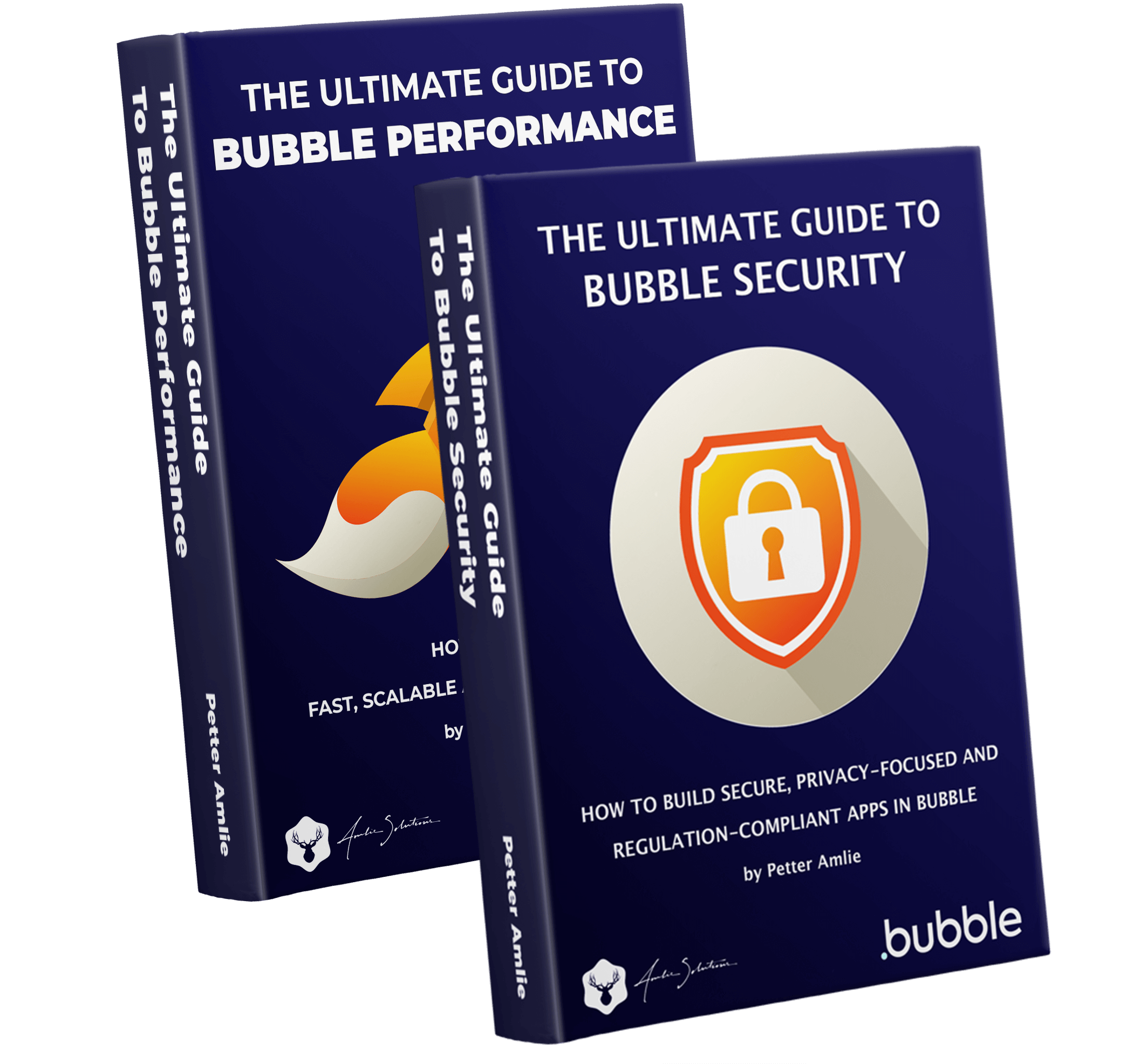Using Floating Groups in Bubble.io
Floating Groups are used to place groups along the edges of the screen that hover above other elements. This article explains its uses and settings.
Tutorials and articles on basic Bubble functionality
Our most popular article categories
The bestseller that teaches how to create fast, efficient apps in Bubble.
How to set up Bubble apps that are secure, private and compliant.
Live video coaching session where we solve problems and optimize your app together.
Bootcamps and coaching for individuals, workplaces and schools/universities
We do a full audit of your app and report on its performance and security – coming soon!
Bubble.io is the world’s most advanced no-code platform, founded in 2011.
Tutorials and articles on basic Bubble functionality
Our most popular article categories
The bestseller that teaches how to create fast, efficient apps in Bubble.
How to set up Bubble apps that are secure, private and compliant.
Live video coaching session where we solve problems and optimize your app together.
Bootcamps and coaching for individuals, workplaces and schools/universities
We do a full audit of your app and report on its performance and security – coming soon!
Bubble.io is the world’s most advanced no-code platform, founded in 2011.
This section contains Bubble.io tutorials for beginners. They teach basic features and is aimed at those who are just getting started with Bubble.io.
If you’re a more experienced user, you may be interested in checking out the advanced Bubble.io tutorials section. To really start learning, check out our Bubble.io books.
Floating Groups are used to place groups along the edges of the screen that hover above other elements. This article explains its uses and settings.
Workflows and actions are the building blocks of everything happening in your Bubble app. Read on to learn how they work.
The slug field is used to set up nice, clean and SEO friendly URLs when sending data to a Page. This article explores the feature in-depth.
Using the Page Thing in Bubble means to instruct Bubble to load a specific database record on a specific page by looking at information stored in the URL. This allows you to set up a unique, permanent and SEO-friendly URL
To send data to a Page in Bubble is easy, but there are a few different ways to do it. This quick guide shows you the pros and cons of each method and how to easily set it up.
Bubble offers a revolution in app development, allowing non-techies to create applications ranging from microservices and automations to complex business systems. You have a chance to be an early adopter of a platform that’s likely going to power a big
Custom States are one of the cornerstones of Bubble app development. This guide goes through the pro’s and con’s of using them.
Repeating Groups are one of the most used element types in Bubble. This guide takes you through how they work, and how/when to use them.
Bubble has five different group types. While they’re all used as containers, their use differs greatly. This article explains the difference between them in detail.
The Issue Tracker can sometimes slow the editor down, or simply be a distraction. Here’s how to quickly disable the Issue Tracker in Bubble.
Support the site and keep it free ❤️
I love tech startups and the Bubble community, and have made it my mission to try and create content that’s valuable, easy to follow and entertaining.
Creating content next to full-time consulting work is time-consuming; if you’d like to support it and keep the site free for everyone, please consider buying me a coffee or becoming a supporting member.

Our professional Bubble books teach you how to plan, structure and build your applications right from the start.



Join the mailing list to get guides, opinions and articles on Bubble, no-code, automation and the tech industry.
We don't share your email address with anyone, and you can unsubscribe at any time.